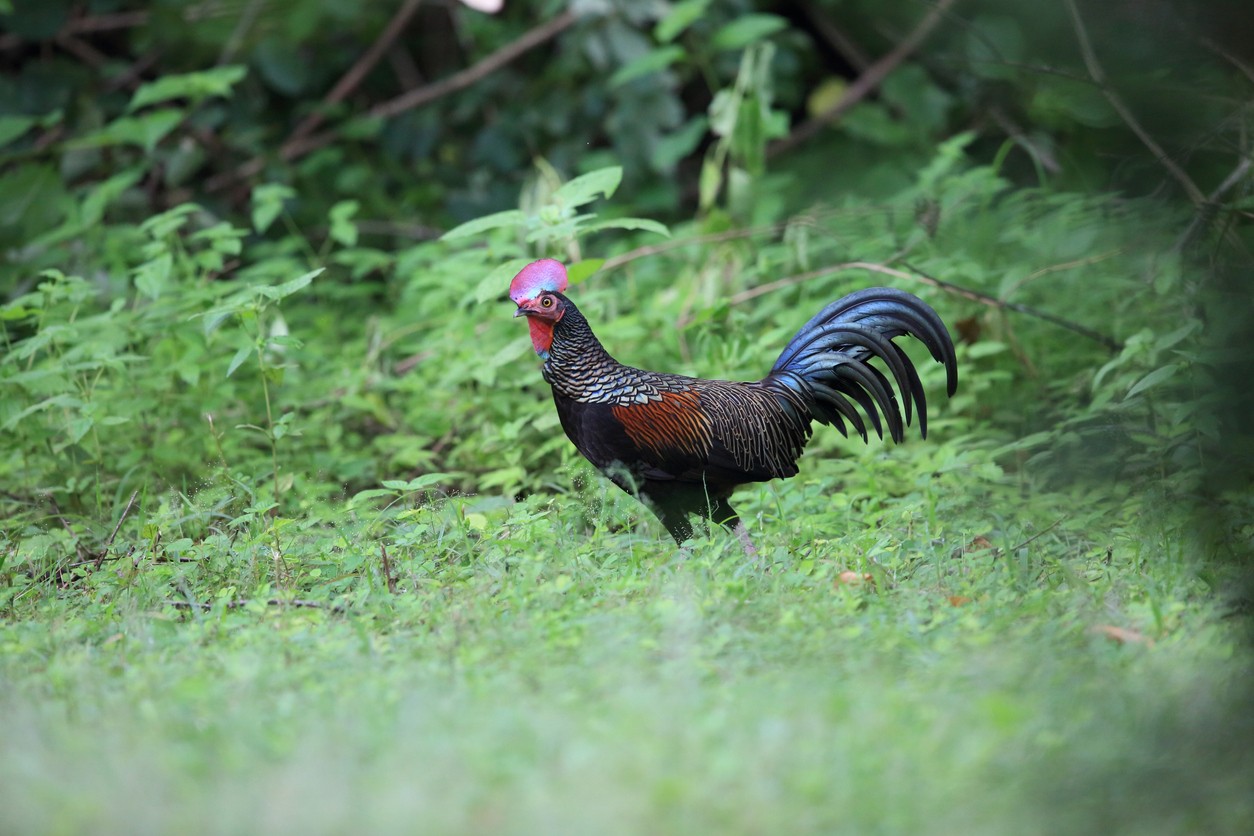Green Junglefowl
A species of Junglefowl Scientific name : Gallus varius Genus : Junglefowl
Green Junglefowl, A species of Junglefowl
Botanical name: Gallus varius
Genus: Junglefowl
Content
Description General Info

Description
The colouration of the green junglefowl is sexually dimorphic. The male's plumage is dark and blackish at a distance. A closer view reveals an iridescent mantle of gleaming scales reminiscent in colour and pattern to those seen in the ocellated turkey and green peafowl. Each scale is vivid blue at its base and moves through various shades of gold and bronzed green. Specialized plumes framing the throat of the male green junglefowl are highly light-reflective and appear violet at the proximal and sky blue at the distal edges. The lesser coverts of the wing are a striking burnt orange with bronzed black centers. The distal edges of the greater secondary coverts are vivid ocher. Like the related red junglefowl, the breast and ventral regions are a dense, light-absorbing black. Like its closer relative the Sri Lankan junglefowl, the male green junglefowl exhibits vivid 'windows' of bare facial skin that contrast against the dark scarlet red of the face. The green junglefowl exhibits an ice blue center in its comb. A region of electric yellow facial skin extends below each ear, delineating the plumed hackles from gular lappet. Its head is topped by a light blue comb, which turns purple or red towards the top. Its wattle is also of the same colour but is bordered with blue on the edges and yellow closer to the throat. The female is mostly brown with occasional green feathers and has no comb. 
Size
70 cm
Nest Placement
Ground
Feeding Habits
Green Junglefowl predominantly feeds on insects, seeds, and berries, complemented by leaves, fruit, and worms. Renowned for their foraging skills, they scour forest floors at various times, displaying a preference for food variety inherent to their habitat.
Habitat
The green Junglefowl frequent a variety of habitats including coastal areas, inland forests up to elevations of 3000 meters in certain regions, and low-lying valleys. Typically, they are found in less dense forested environments, such as forest margins and scrubland associated with agricultural areas like rice plantations. They adapt to areas near human settlements, provided they are not hunted. These birds also inhabit savanna regions and show a preference for lower elevations, although they can be found at varying altitudes across different geographical locations.
Dite type
Omnivorous
General Info
Feeding Habits
Bird food type
Behavior
The green junglefowl usually lives in groups of two to five in the wild led by a dominant male, who takes the flock to feed and drink and then back into the cover of the forest. In the night the flock roosts in bamboo stands at 15–20 feet above the forest floor. In the breeding season the dominant males in each flock are challenged by other males without flocks. The two males clap their wings and crow loudly while fighting each other with their spurs. 
Distribution Area
The green junglefowl is endemic to Java, Bali, Lombok, Komodo, Flores, Rinca and small islands linking Java with Flores, Indonesia. It has been introduced to the Cocos (Keeling) Islands where there is a small wild population. It is found from a natural altitude of 0–2000 m in subtropical/tropical lowland moist forest, shrubland and arable land, and has been seen flying from island to island in its native range, where it lives and breeds along coastal areas. 
Species Status
The green junglefowl is evaluated as least concern on the IUCN Red List of Threatened Species. 

